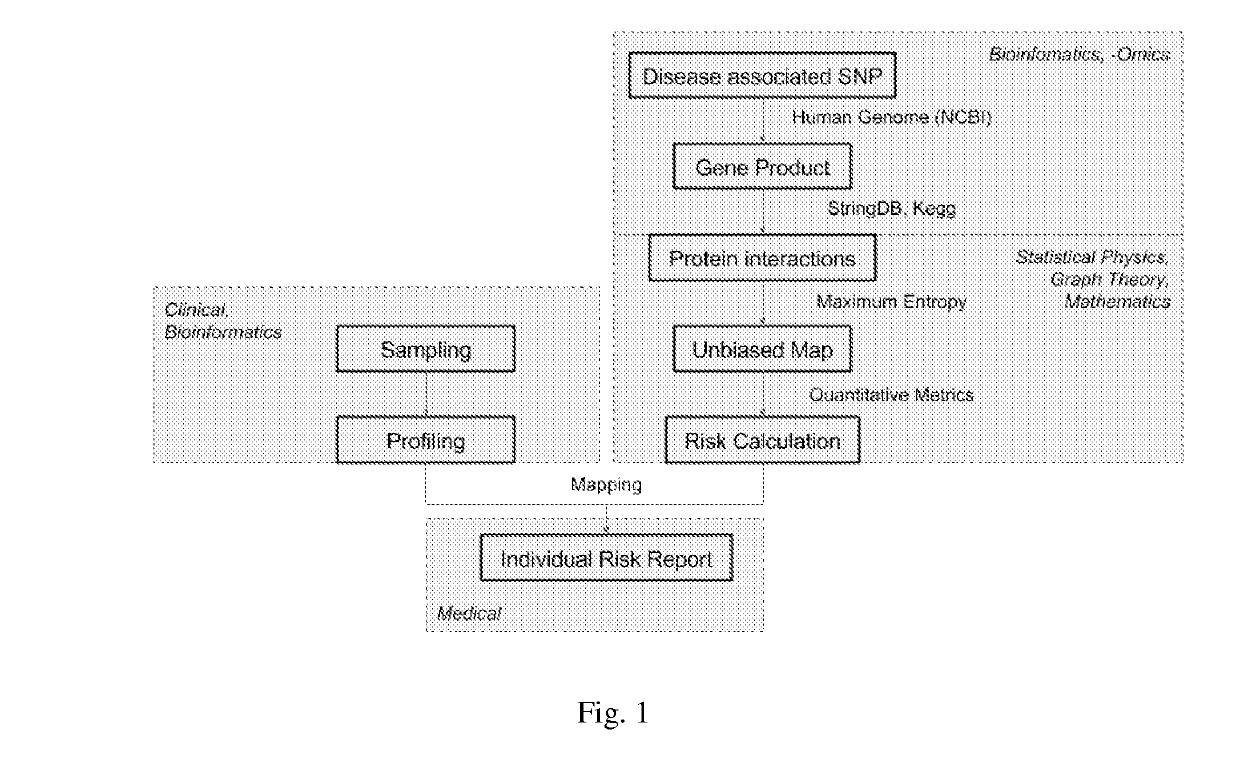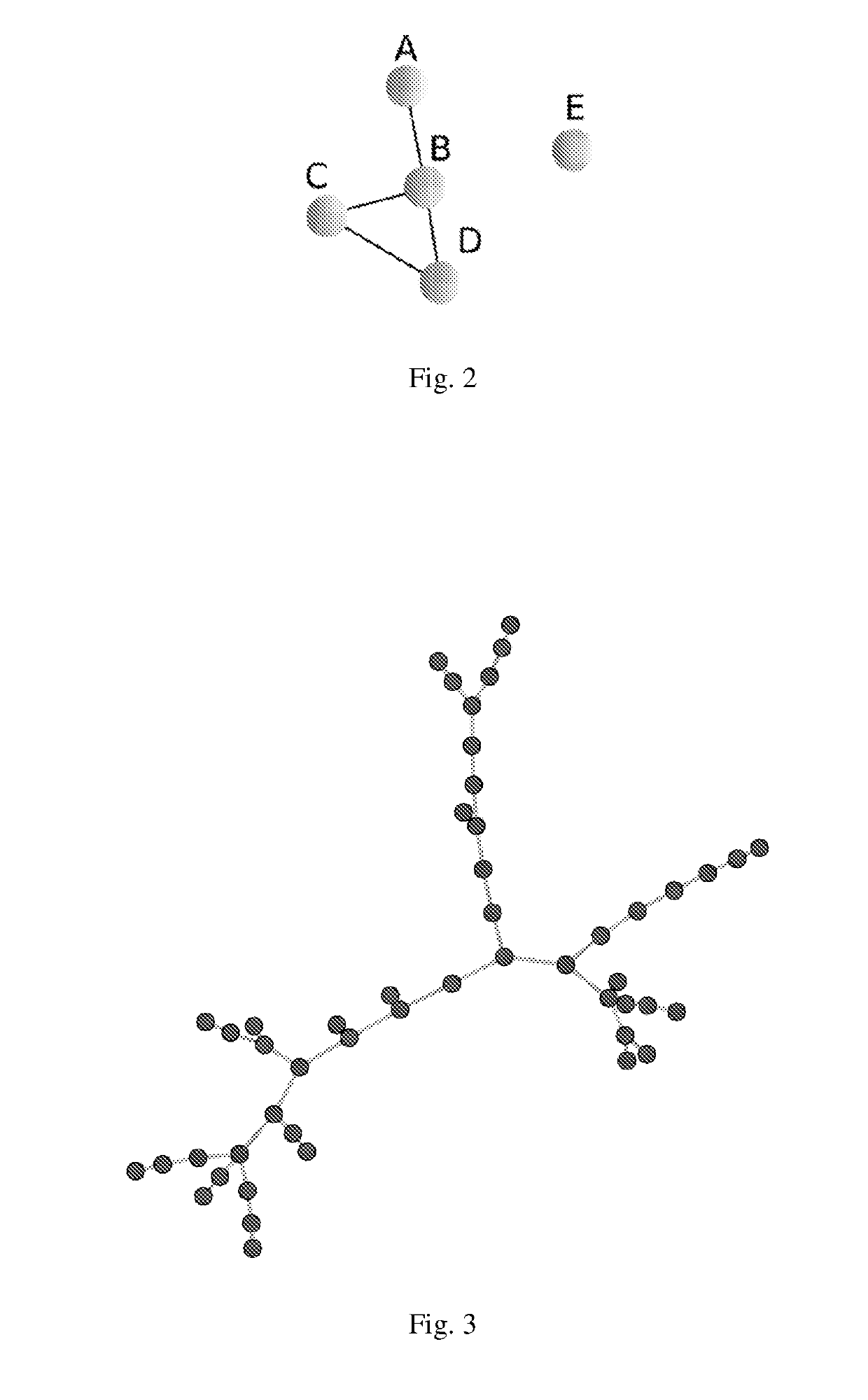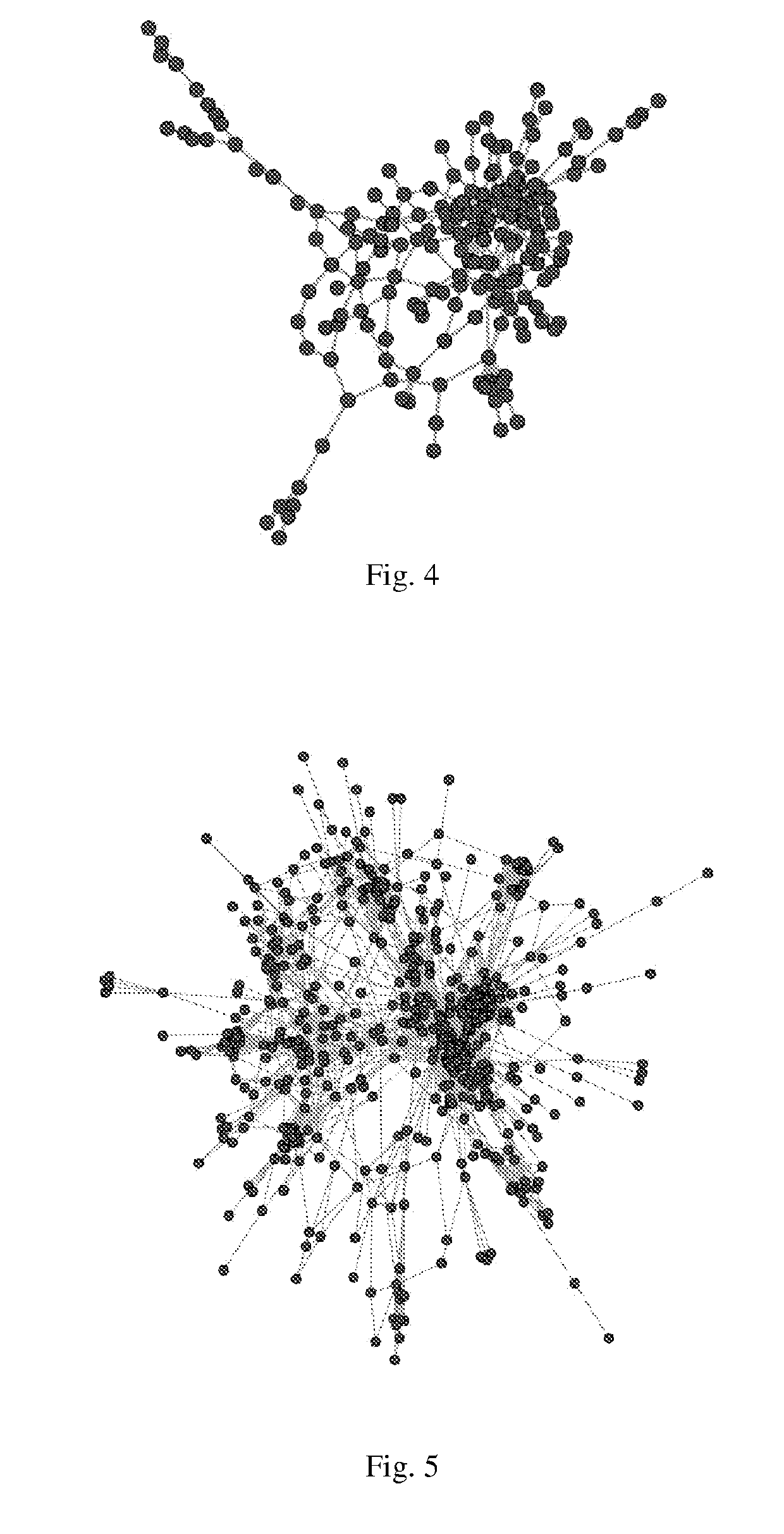Methods for Analysis of Digital Data
a digital data and analysis method technology, applied in the field of biological molecular interaction analysis, mass data gathering, mass data integration, etc., can solve problems such as unrelationship
- Summary
- Abstract
- Description
- Claims
- Application Information
AI Technical Summary
Benefits of technology
Problems solved by technology
Method used
Image
Examples
example i
t of Risk of Developing Arteriosclerosis
[0072]We produced a Risk Assessment Map product permitting evaluation of individuals' risk for developing arteriosclerosis with a low degree of bias and identification of the proteins and protein interactions that are of critical importance to the risk of developing arteriosclerosis.
[0073](a) Extraction of Associated SNPs
[0074]We first compiled a database of reported single nucleotide polymorphisms (SNPs) associated with arteriosclerosis. We compiled our initial Associated SNP Database by extracting SNP identifiers from the Genome-Wide Association Studies (or GWAS) Catalog, which is a database collecting genotyping and analysis data on >100,000 SNPs without regard to gene locus or gene content from published peer-reviewed medical and scientific journal articles and science news reports. SNP information was selected as a starting point because it was a data-rich collection providing a great deal of publicly available information relevant to art...
example ii
of Individual's Risk of Development of Arteriosclerosis
[0108]The Risk Assessment Database product from Example I was used to assess the predisposition of two hypothetical individuals to develop arteriosclerosis.
[0109]A hypothetical sample population was created by randomly generating SNP profiles of 1000 hypothetical individuals based on the 574 proteins identified in Example I as highly relevant to arteriosclerosis. For each protein, one of the two SNP variants reported in the GWAS Catalog was randomly assigned, i.e., so that for each of the 574 proteins, the individual would harbor the variant associated with arteriosclerosis or a variant not associated (or less associated) with development of arteriosclerosis. The 1000 profiles were scored using the Risk Assessment Database product produced in Example I, and plotting the scores produced a normal bell curve. This plot was used as a standard curve against which to compare two exemplar profiles, one for a hypothetical Subject A and ...
example iii
of Risk of Developing Autism
[0117]Following the general methodology illustrated in Example I, a Risk Assessment Database product is generated for assessment of risk for development of Autism Spectrum Disorder, a complex early childhood onset disease.
[0118]Autism Spectrum Disorder is a general term for a wide range of complex social communication and behavioral interaction disorders with genetic and environmental confounding factors associated with the disorder, as reported in the literature. These disorders are characterized, in varying degrees, by difficulties in social interaction, difficulties in verbal and nonverbal communication, and repetitive behaviors. Autism can be associated with intellectual disability, difficulties in motor coordination and attention, and physical health issues such as sleep and gastrointestinal disturbances. Some persons diagnosed with autism excel in visual skills, music, math and art.
[0119]Autism appears to have its roots in very early brain developme...
PUM
 Login to View More
Login to View More Abstract
Description
Claims
Application Information
 Login to View More
Login to View More - R&D
- Intellectual Property
- Life Sciences
- Materials
- Tech Scout
- Unparalleled Data Quality
- Higher Quality Content
- 60% Fewer Hallucinations
Browse by: Latest US Patents, China's latest patents, Technical Efficacy Thesaurus, Application Domain, Technology Topic, Popular Technical Reports.
© 2025 PatSnap. All rights reserved.Legal|Privacy policy|Modern Slavery Act Transparency Statement|Sitemap|About US| Contact US: help@patsnap.com



